Zayed University, UAE
Type of resources
Topics
Keywords
Contact for the resource
Provided by
Years
Formats
Update frequencies
-
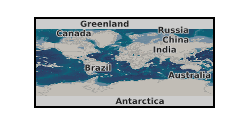
This review details the laboratory experiments that have investigated leakage of geologically stored CO2 (as of June 2013). These experiments have covered a range of leakage factors. Knowledge of these factors can both compliment and help inform any future experiments at the QICS site. As such, the report details what experiments have been performed in the lab to date, how lab experiments can inform QICS and how QICS could inform laboratory experiments. Grant number: UKCCSRC-C1-31.
-
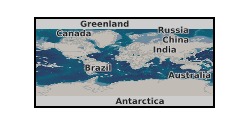
This report has been superseded by the paper: https://www.sciencedirect.com/science/article/pii/S1750583617301081. Grant number: UKCCSRC-C1-31. The NERC-funded QICS controlled CO2 release experiment (located offshore Oban, Scotland) mimics the formation of a new CO2 seep in the marine environment. At the site, CO2 is injected at an onshore well head, and a stainless steel pipe transports the CO2 under the seabed. Approximately 350 m offshore, the CO2 is released through a perforated screen into the 12 metres of overlying marine sediment, which is at approximately 10 metres water depth. During spring/summer 2012, 4.2 tonnes of CO2 was released at the QICS experimental site. A key element of risk assessment for the subsurface storage of CO2 is the monitoring of leaks from the subsurface in to the marine or terrestrial environments via sediments and soils. Chemical 'fingerprinting' of injected CO2 is widely considered a low cost, highly effective monitoring option, since effective application of tracers in CCS could provide information on (i) the movement, interaction and fate of injected CO2 in the subsurface and (ii) the detection (and quantification) of CO2 that has leaked from the storage complex to the surface. There is a need to develop geochemical techniques to differentiate between CO2 from natural processes, and the QICS site may provide excellent opportunity to trial geochemical tracers. This work aims to determine which chemical tracers are most suitable for CO2 tracing at the QICS facility and the research questions that tracer application can address. As such, this report includes: i. A review of current potential chemical tracers for CCS and their applications. ii. An analysis and comparison of costs, availability, environmental impact and detection limits for potential tracers. iii. An assessment of the above in the context of QICS (i.e: considering the CO2 will be released from the seabed (having passed from dense to gas phase), and having passed through water saturated sediment of the seabed, and into the water column. iv. An overview of the legal considerations for tracers in the UK. v. The injection method for tracers at the QICS site. vi. Required strategies for sampling the selected tracer. vii. Identify knowledge gaps in tracer studies which experiments at the QICS site could address.
-
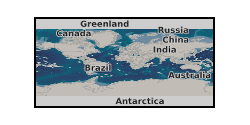
The NERC-funded QICS controlled CO2 release experiment (located offshore Oban, Scotland) mimics the formation of a new CO2 seep in the marine environment. At the site, CO2 is injected at an onshore well head, and a stainless steel pipe transports the CO2 under the seabed. Approximately 350 m offshore, the CO2 is released through a perforated screen into the 12 metres of overlying marine sediment, which is at approximately 10 metres water depth. During spring/summer 2012, 4.2 tonnes of CO2 was released at the QICS experimental site. CO2 bubbles emerged from the seafloor ~30m to the west of the site and individual plumes covered a total area of ~ 350m2. Bubble stream location was recording using audio (acoustic) and visual techniques (photography, video). Both techniques are useful for recording the general location of plumes. However their 2D nature made it hard to characterise individual plumes and their exact locations. The QICS1 experiment included 200 deployments/recoveries of instruments, collection of 1,300 samples, and installation of 1600 m of cable and placement of 24 cages of indicator species on the seabed. In order to aid planning and operation during potential further experiments at the site it would be beneficial to utilise a robust and accurate method of recording the locations of equipment, samples and CO2 bubble streams. In this review, the four main types of submarine geolocation technologies are detailed and compared, and best available models (as of June 2013) are detailed. Grant number: UKCCSRC-C1-31.
-
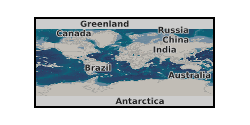
This poster on the UKCCSRC Call 1 project QICS2 Scoping Project: Exploring the Viability and Scientific Opportunities of a Follow-On Marine Impact Project was presented at the CSLF Call project poster reception, London, 27.06.16. Grant number: UKCCSRC-C1-31. The world's first sub-seabed CO2 release experiment was completed in 2014, offshore from Oban (Scotland). The project, known as QICS (Quantifying and Monitoring Potential Ecosystem Impacts of Geological Storage), mimicked the formation of a small-scale CO2 leak into sediments near the seabed. In 2012, CO2 was continuously injected into the sediments for 37 days, releasing a total of 4.2 tonnes of CO2. The QICS1 experiment was first of its kind, and was highly successful, enabling: i. field testing of monitoring technologies to detect CO2 against a measured baseline ii. assessment of environmental and ecosystem impacts of leaked CO2 (within the sediment and water column) iii. the flow and fate of CO2 in sediments, and dispersion and dilution of CO2 in seawater, to be explored.
-
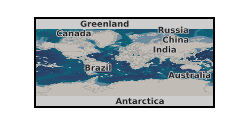
The NERC-funded QICS controlled CO2 release experiment (located offshore Oban, Scotland) mimics the formation of a new CO2 seep in the marine environment. At the site, CO2 is injected at an onshore wellhead, and a stainless steel pipe transports the CO2 under the seabed. Approximately 350 m offshore, the CO2 is released through a perforated screen into the 12 metres of overlying marine sediment, which is at approximately 10 metres water depth. During spring/summer 2012, 4.2 tonnes of CO2 was released at the QICS experimental site. In order to establish stakeholder views on the research priorities for the site, consultations for three 'audiences' were performed via online questionnaires. These 'audiences' were: 1. QICS research community: Researchers actively involved in the QICS project were asked to complete an online questionnaire. The questionnaire aimed to gather participants' reflections of the QICS CO2 injection experiment in Summer 2012, and also to consult on the scientific priorities for possible future activity at the site. 2. CCS (storage) research community: The international CCS research community (specifically, researchers working on aspects of CO2 storage) were consulted via an online questionnaire distributed by the IEAGHG storage network mailing list in June 2013. The survey aimed to gather their reflections of the QICS project, and to consult on the scientific priorities for possible future activity at the site. The survey had 24 respondents with a broad range of expertise and representing both industry and research organisations from 10 countries. 3. Technology industry: Technology industries were consulted via an online questionnaire. The survey aimed to gather consult on the scientific priorities for science and technology development at possible future activity at the site, and also to scope potential interest from technology developers. For each of these consultations there is a report (presenting a synthesis of the survey responses) and also the dataset for all three surveys. All of these files are confidential. Grant number: UKCCSRC-C1-31.
 BGS Data Catalogue
BGS Data Catalogue